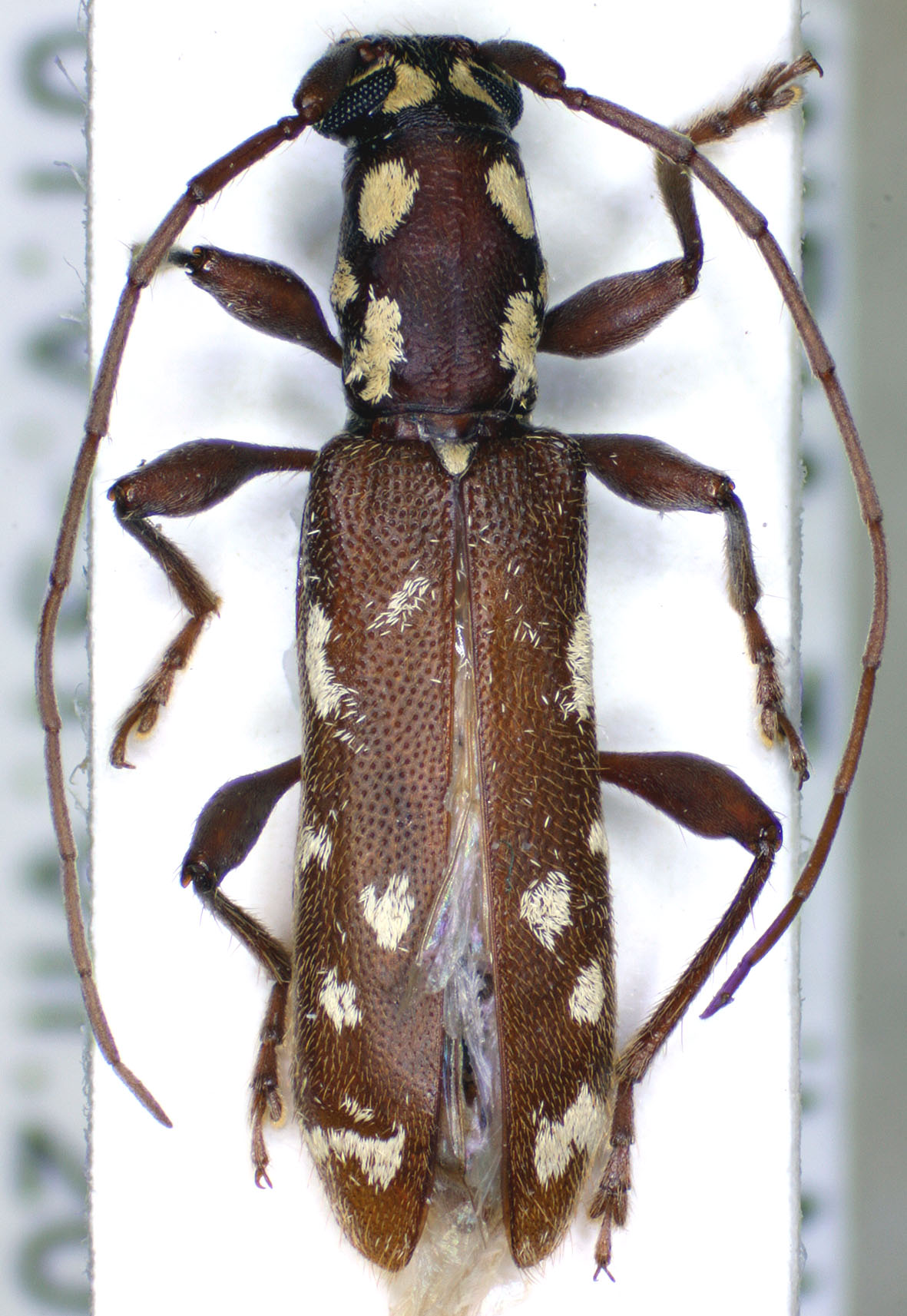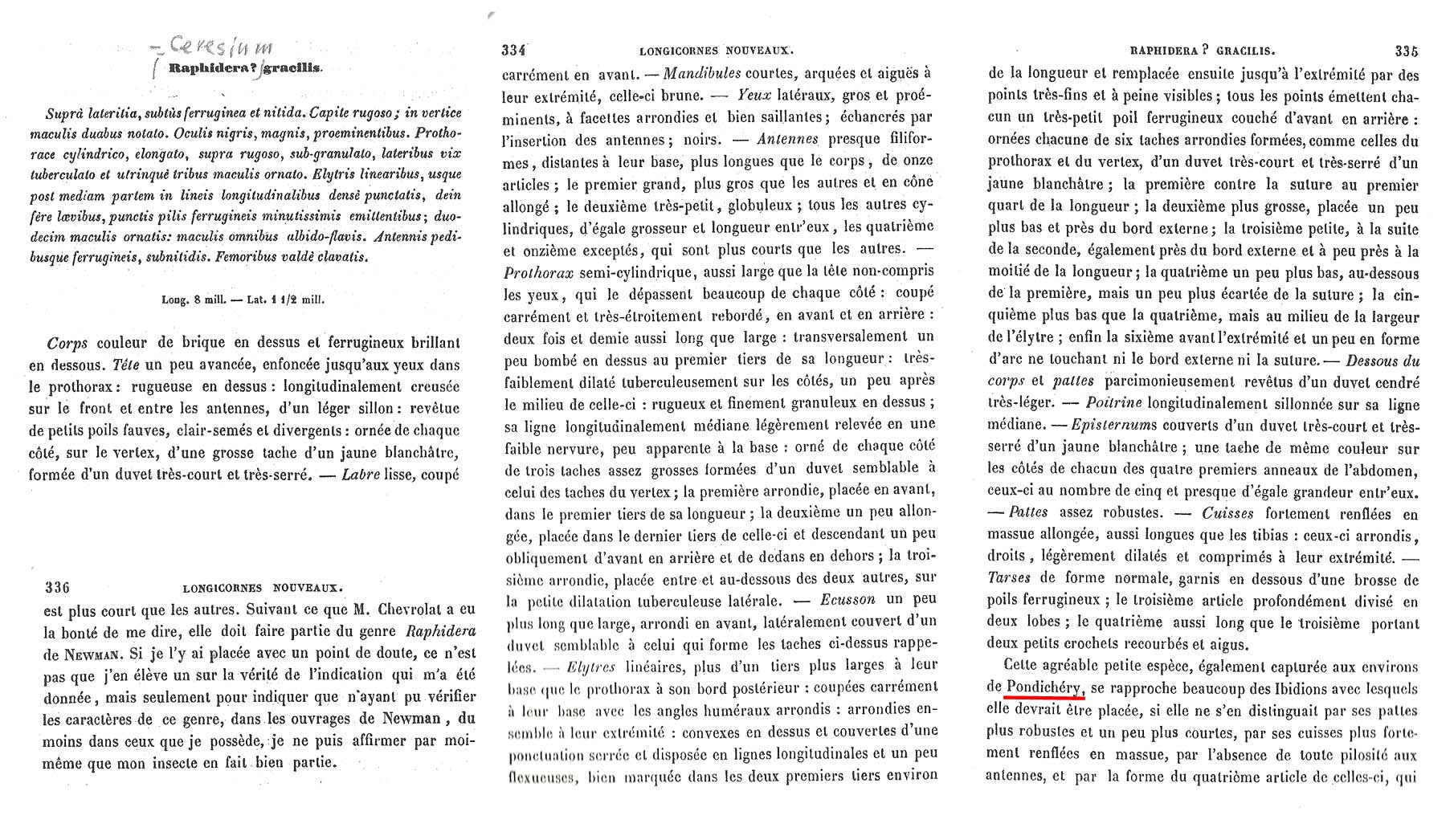| Author |
 Topic Topic  |
|
|
Xaurus
Member Rosenbergia
   
Germany
1964 Posts |
 Posted - 11/06/2013 : 23:57:38 Posted - 11/06/2013 : 23:57:38



|

339.24 KB
from S-India, size 10 mm |
|
|
Francesco
Forum Admin
    
Luxembourg
9511 Posts |
 Posted - 14/06/2013 : 00:02:02 Posted - 14/06/2013 : 00:02:02




|
Das sollte ein Weibchen von Ceresium gracile (Perroud, 1855) sein.
Einige Fotos des Typus seines Synonyms, Callimetopoides albomaculatus Breuning, 1981, können hier heruntergeladen werden.
Die Zeichnung deiner Art scheint aber ein wenig abweichend... |
 |
|
|
Xaurus
Member Rosenbergia
   
Germany
1964 Posts |
 Posted - 14/06/2013 : 16:05:40 Posted - 14/06/2013 : 16:05:40



|
Dear Francesco,
thanks a lot for your idea, I believe my spms belongs to this.
The female has thinner femurs and shorter antennae, the tomentation at the surface is nearly the same, only the scutellum is different, white in my spms.
Maybe you can find any info in the really comprehensive descr of C. gracile, I have attached. For my french is not easy to understand.

445.02 KB |
 |
|
|
Francesco
Forum Admin
    
Luxembourg
9511 Posts |
 Posted - 14/06/2013 : 16:46:21 Posted - 14/06/2013 : 16:46:21




|
In the original description, the scutellum is defined as "covered whith the same pubescence of the elytral spots [whitish yellow]".
"Pondichéry" is Pondicherry, South India (here) |
 |
|
|
Xaurus
Member Rosenbergia
   
Germany
1964 Posts |
 Posted - 14/06/2013 : 21:40:13 Posted - 14/06/2013 : 21:40:13



|
Thanks Francesco,
this is a further evidence that my spm belongs to C. gracile,
and also the origin in S-India. The synonymy of C. albomaculatus is not yet published, or. ? like so many of Holzschuh's discoveries.
At the type picture of C. albomaculata some remains of the scutellar tomentation are still visible. |
 |
|
| |
 Topic Topic  |
|


